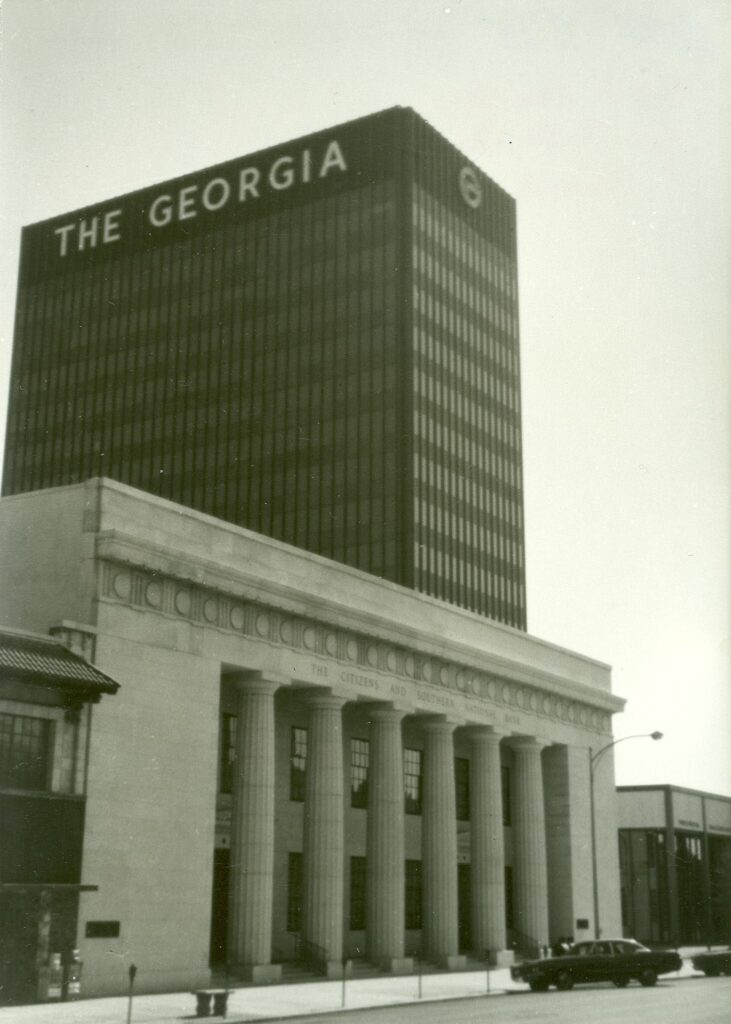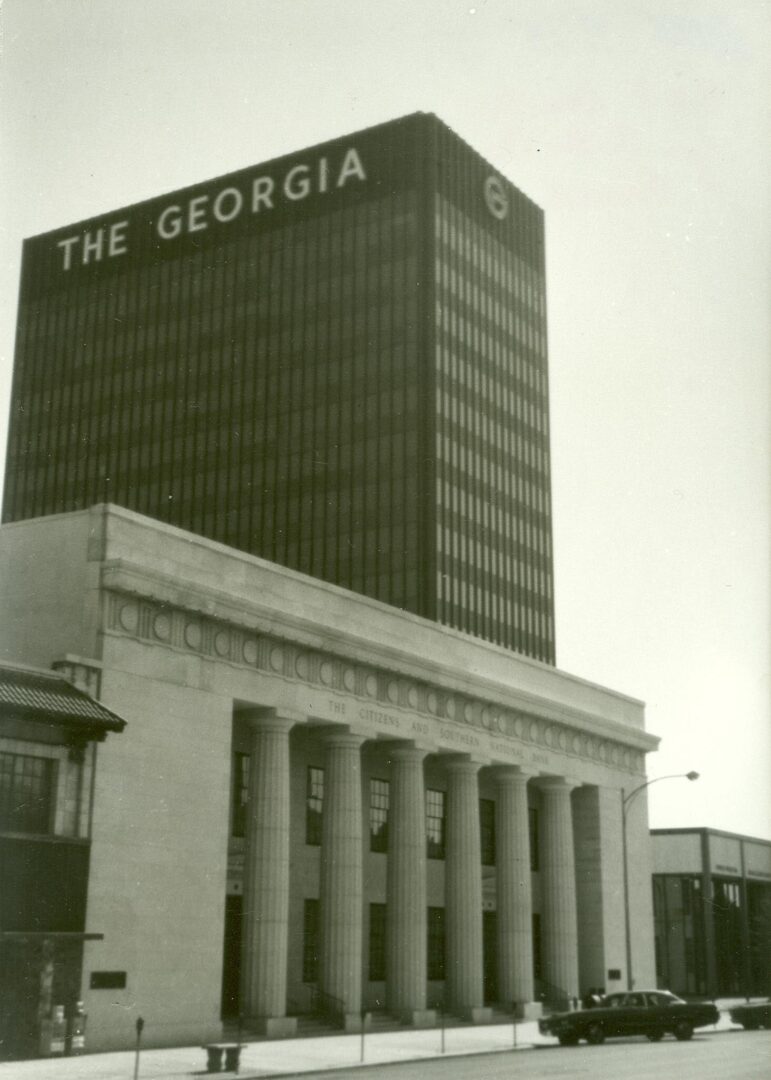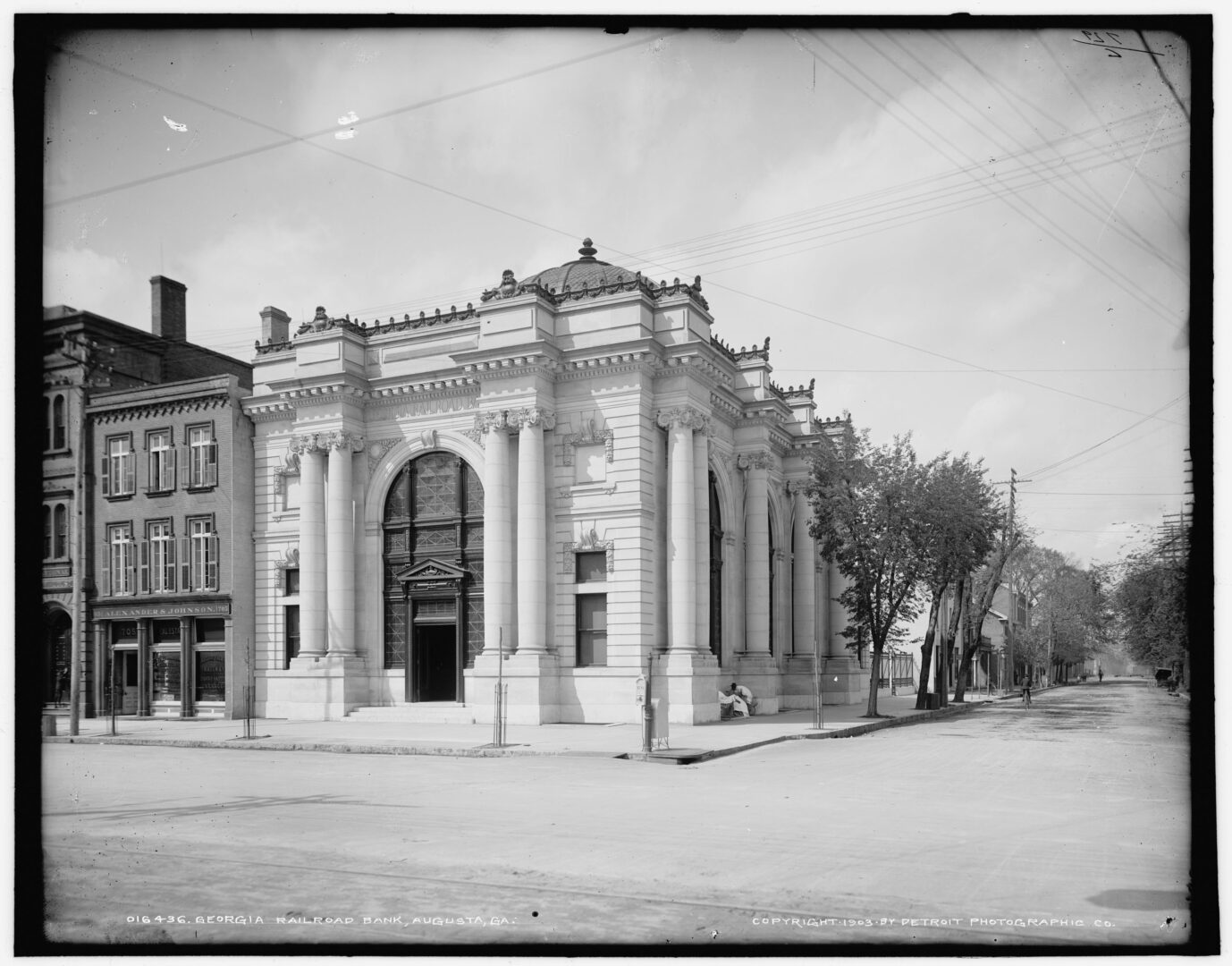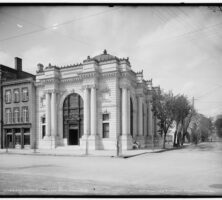The company that began as Georgia Railroad Bank was a major financial institution in Augusta for more than a century.
In 1833, the Georgia Railroad Company was chartered to a group of Athens businessmen for the purpose of building a railroad westward from Augusta into the interior of the state, extending the line that already existed between Charleston, South Carolina, and Augusta. The charter was amended in 1835 to allow banking operations, and the name was changed to Georgia Railroad and Banking Company. The bank had a capital stock of $2 million and issued its own paper money.
Company headquarters moved from Athens to Augusta in 1840. The Georgia Railroad was completed to Marthasville (later Atlanta) in 1845. That same year the bank branch of the company helped to finance a canal system in Augusta that brought water-powered industry to the city and fostered its manufacturing rebirth.
The company operated continuously during the Civil War (1861-65), transporting men and materiel for the Confederate war effort. At the end of the war, the railroad carried 100,000 southern veterans home free of charge. Large portions of the lines, facilities, and rolling stock were destroyed during the conflict and had to be replaced at war’s end. Bank notes issued by the company during hostilities were honored after the war and could still be redeemed at face value as late as the 1980s. Despite the expiration of its charter in 1864, the bank continued to function, and the charter was renewed in 1870.
A separate subsidiary for banking operations, the Georgia Railroad Bank, was organized in 1890. Trust services were added to the bank’s activities in 1929, and the name of the company was subsequently changed to Georgia Railroad Bank and Trust Company. The bank joined the Federal Reserve System in 1931. During the Great Depression, the Georgia Railroad Bank was closed briefly in 1933 for U.S president Franklin D. Roosevelt’s “bank holiday,” the only time during the bank’s long history that it suspended operations.
In 1954 the First Railroad and Banking Company of Georgia was formed as a holding company, and it acquired control of the bank and trust company from the railroad company. From 1958 to the late 1960s the company also offered insurance services but then sold that portion of its operation.
The signature seventeen-story corporate office tower, called the Georgia Railroad Bank Building, was erected at 699 Broad Street in Augusta in 1967, directly across the street from the bank’s first Augusta headquarters at 701 Broad. The tower is still in use as the Wachovia Bank Building.

In 1881 the company transferred its rail operations to the Central of Georgia Railway for ninety-nine years under the “Wadley Lease.” The lease was renegotiated in 1972, extending it to the year 2030. Large parcels of land in Atlanta and Augusta that were part of the lease agreement became available for disposition and development and were sold between 1973 and 1981, much of it to the Georgia Building Authority. The railroad assets of the company were sold in 1982.
Noteworthy officers of the Georgia bank have included John Pendleton King of Augusta, a former U.S. senator, who was president from 1841 to 1878, and former Confederate general Edward Porter Alexander, president from 1878 to 1880. After Alexander’s departure, bank leadership passed to the Phinizy family, and three successive members of the family, Charles H., Jacob, and the younger Charles H., oversaw the bank’s operations and expansion until 1947. The rail line between Augusta and Atlanta is studded with towns named for early company officials: Camak (James A. Camak, president), Dearing (William E. Dearing, president), and Thomson (J. Edgar Thomson, chief construction engineer).
The bank merged in November 1986 with First Union Corporation of Charlotte, North Carolina. At the time of the merger, First Railroad estimated its assets to be thirty-four times what they had been when the bank was formed in 1954. In September 2001 First Union merged with Wachovia Corporation of Winston-Salem, North Carolina. In June 2005 Wachovia apologized to African Americans for the bank’s ties to American slavery because the Georgia Railroad and Banking Company had employed at least 162 enslaved workers in railroad construction between 1836 and 1842. Wachovia was acquired by Wells Fargo & Company during the 2008 financial crisis.








